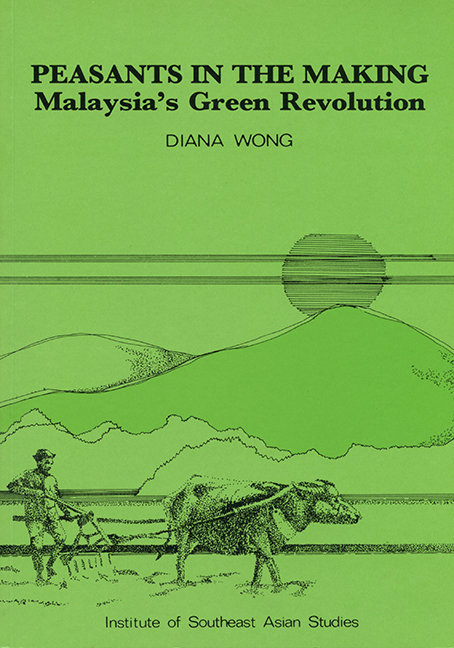Book contents
- Frontmatter
- Contents
- Acknowledgements
- Part I The Framing of the Study
- Part II The Anatomy of the Village
- Part III The Transformation of the Village Economy
- Part IV The Transformation of Village Society: The Unfolding of Social Differentiation
- Part V Conclusion
- Chapter 14 Peasants in the Making — Muda's Green Revolution?
- Appendix I Research Methodology
- Appendix II Questionnaire
- Bibliography
- THE AUTHOR
Chapter 14 - Peasants in the Making — Muda's Green Revolution?
from Part V - Conclusion
Published online by Cambridge University Press: 21 October 2015
- Frontmatter
- Contents
- Acknowledgements
- Part I The Framing of the Study
- Part II The Anatomy of the Village
- Part III The Transformation of the Village Economy
- Part IV The Transformation of Village Society: The Unfolding of Social Differentiation
- Part V Conclusion
- Chapter 14 Peasants in the Making — Muda's Green Revolution?
- Appendix I Research Methodology
- Appendix II Questionnaire
- Bibliography
- THE AUTHOR
Summary
The study of agrarian transformation, which could well sum up the theme of this book, has been dominated by two opposing paradigms: one associated with the name of Lenin, the other with Chayanov. Both concurred methodologically in employing the household as the basic unit of analysis (defined as the unit of production and consumption) while differing in their analytical focus: for Lenin, relations of production, which were open to the influence of external factors, structured relations between households; for Chayanov, relations of reproduction, which were generated by internal, demographic factors, structured relations within rather than between households.
In keeping with the first model, the process of change in a peasant economy is usually envisaged in terms of the confrontation between a “traditional society” embedded in a “subsistence economy” and the capitalist market economy, represented, for most Third World countries, by the so-called “Green Revolution”. This integration of the peasantry into the market economy or commercialization of agriculture “generally sets in motion a tendency towards the concentration of land in fewer hands” via the dispossession of the smaller and marginalized peasants. A process of social differentiation begins resulting in the constitution of large capitalist farms on the one hand, and landless agricultural labourers on the other. The elimination of the peasantry is its historical product. This model has also been applied to studies of the Malaysian peasantry.
The second model locates the peasant in a toiler or family labour farm which is embedded in supportive kinship or village structures and whose productive activities are directed towards subsistence rather than profit. Such a farm would be impervious to capitalist encroachment and thus resistant to its otherwise transformative effects in the direction of polarization and elimination. Echoes of this position also rebound in the Malaysian literature.
This study of a Muda village which was subject to the tremendous forces of change unleashed by the “Green Revolution” comes to the same conclusion as that of another Malaysian scholar, namely, the possibility of alternative trajectories of change.
- Type
- Chapter
- Information
- Peasants in the MakingMalaysia's Green Revolution, pp. 209 - 221Publisher: ISEAS–Yusof Ishak InstitutePrint publication year: 1987

